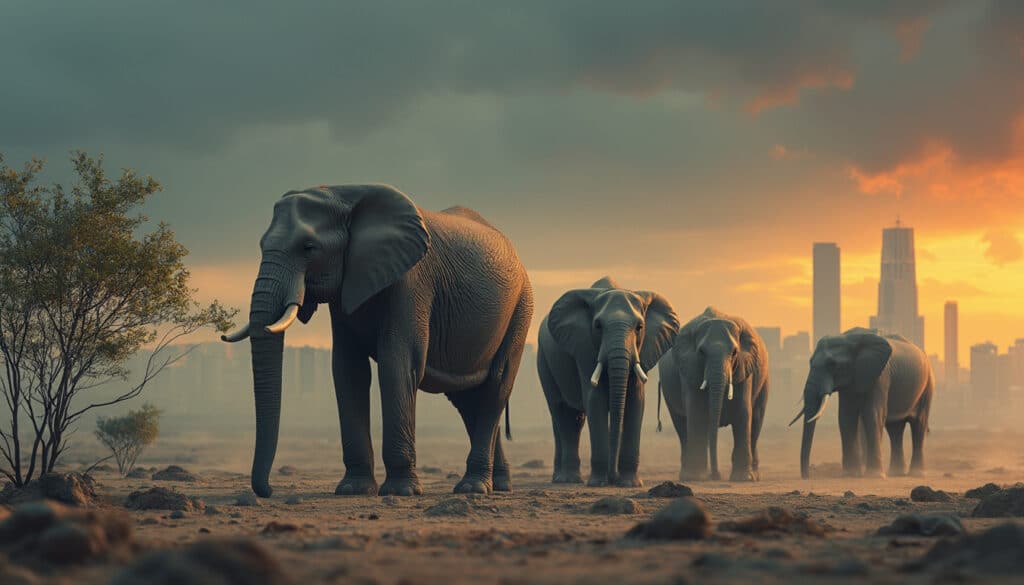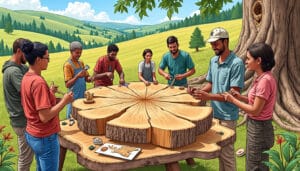The footprint of man on the planet extends from the highest mountains to the depths of the ocean, shaping a world where some species must adapt to survive. These adaptations are remarkable and testify to nature’s ability to find new paths to survival. Among them, elephants lose their tusks to escape poachers, and the majestic mahogany trees, once 20 meters tall, become small shrubs. These evolutions illuminate the unintended consequences of our influence on global biodiversity.
Human influence on our planet is undeniable and profoundly affects the animal and plant kingdoms. Among the striking examples, African elephants are increasingly found without tusks due to intensive poaching. This rare genetic trait has become a survival asset in response to the pressure from poachers, favoring their reproduction. On the other hand, mahogany wood, once famous for its imposing trees reaching 20 meters in height, is undergoing a radical transformation. Due to excessive exploitation, these trees now rarely exceed the size of bushes, thus losing their commercial value. These examples illustrate the remarkable adaptations that life on Earth must undertake to adjust to the world shaped by man.

elephants without tusks
African elephants have been hunted for their ivory for many decades. This pressure has led to a unique evolution: the proportion of elephants without tusks has significantly increased. This change is due to natural selection favoring tuskless elephants, as they escape poachers. During the civil war in Mozambique, elephants bearing this genetic mutation survived, altering the genetic heritage of the population.
Elephants without tusks are not limited to Mozambique. In other African regions, a similar phenomenon is observed, caused by poaching. This adaptation allows for the study of the direct impact of human activities on the evolution of large species. Without appropriate intervention, this type of selection could change the ecological dynamics of several natural reserves.
miniature trees in response to deforestation
The majestic mahogany, known for its prized red wood, is threatened by excessive exploitation. In many areas, these trees reach reduced heights and no longer possess the imposing stature they once had. This transformation is attributed to the cutting down of the largest trees, preventing the reproduction of fast-growing individuals and making way for smaller trees. Mahogany is now often in the form of a shrub, unable to provide quality commercial wood.
consequences and evolutionary perspectives
As these changes are observed, the scientific community questions the future consequences. The ecological changes prompted by human interventions do not stop at iconic species like elephants and mahogany trees. Other species also show unusual adaptations, such as the use of urban materials for nest building by certain bird species. These examples underline the importance of sustainable and informed management to preserve biodiversity and its functions in global ecosystems.
Articles similaires
Thank you!
We will contact you soon.














